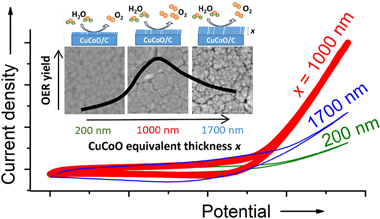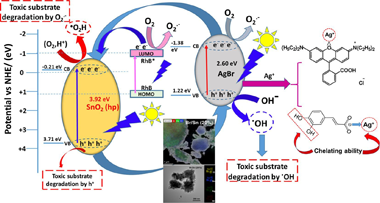Scientific Papers in SCI
2021
2021
Tribología y Protección de Superficies
Insights into the role of the layer architecture of Cr-Ti-N based coatings in long-term high temperature oxidation experiments in steam atmosphere
Mato, S; Sanchez-Lopez, JC; Barriga, J; Perez, FJ; Alcala, GCeramics International, 47 (2021) 4257-4266
Show abstract ▽
Knowledge on hard coatings has been applied in the energy field extending their use as protecting coatings of steam power generation plants components. The role of the layer architecture of Cr-Ti-N based coatings deposited by reactive cathodic arc evaporation on P92 steel substrates was studied with the focus on their oxidation resistance at 650 degrees C in 100% steam atmosphere up to 2000 h. Characterization of the coatings was performed by gravimetry, scanning electron microscopy, electron probe microanalysis, glow discharge optical emission spectroscopy, X-ray diffraction, thermodynamic simulations using the CALPHAD method, Rockwell C indentation and nanoindentation. The layered arrangement improves the oxidation resistance of TiN under the working conditions of steam power plants, as well as the mechanical properties of CrN. The produced architectures performance under the described working conditions boosts the understanding of the processes taking place at high temperature, making possible the design of optimal coatings combining the best behavior of both nitrides for each specific application, reaching a corrosion protection at high temperature in water vapor comparable to that of CrN and a hardness and Young's modulus as high as those of TiN.
February, 2021 | DOI: 10.1016/j.ceramint.2020.10.003
Nanotecnología en Superficies y Plasma
Active sites and optimization of mixed copper-cobalt oxide anodes for anion exchange membrane water electrolysis
Lopez-Fernandez, E; Gil-Rostra, J; Escudero, C; Villar-Garcia, IJ; Yubero, F; Consuegra, AD; Gonzalez-Elipe, ARJournal of Power Sources, 485 (2021) 229217
Show abstract ▽

The optimization of the catalysts incorporated to the electrodes for anion exchange membrane water electmlysers is a key issue to maximize their performance through the improvement of the oxygen evolution reaction (OER) yield. In this work, we show that the modification of the microstructure and the chemical properties of a mixed copper-cobalt oxide anode may contribute to increase the activity of this reaction. For this purpose, the OER has been systematically studied, either in a half cell or in a membrane electrode assembly configuration, as a function of the load and agglomeration degree of the catalysts used as electrodes, as prepared on a carbon paper support by magnetron sputtering deposition in an oblique angle configuration. Chemical analysis by X-ray absorption spectroscopy and electrochemical analysis by cyclic voltammetry and impedance spectroscopy have shown that cobalt-copper mixed oxide catalysts with a 1.8 Co/Cu atomic ratio and about one micron equivalent thickness maximizes the cell performance. The chemical, structural and microstructural factors controlling the final behaviour of these anodes and accounting for this maximization of the reaction yield are discussed on the basis of these characterization results and as a function of preparation variables of the electrodes and operating conditions of the cell.
February, 2021 | DOI: 10.1016/j.jpowsour.2020.229217
Propiedades mecánicas, modelización y caracterización de cerámicos avanzados
The Possible Detriment of Oxygen in Creep of Alumina and Zirconia Ceramic Composites Reinforced with Graphene
Cano-Crespo, R; Rivero-Antunez, P; Gomez-Garcia, D; Moreno, R; Dominguez-Rodriguez, AMaterials, 14 (2021) 984
Show abstract ▽
This paper aims to give an answer to the following question: is the oxidation of graphene a critical issue for high-temperature plasticity in graphene-reinforced ceramics? To give a convincing reply, we will focus on two very different graphene-based ceramic composites: reduced graphene oxide (rGO)-reinforced alumina (alpha-Al2O3) and reduced graphene oxide (rGO)-reinforced yttria tetragonal zirconia (t-ZrO2). The processing of the powders has been made using a colloidal route, and after that, a spark plasma sintering process was performed in order to densify the samples. Creep tests were performed at temperatures between 1200-1250 degrees C in an argon atmosphere. The microstructure obtained by SEM of the sintered and tested specimens was characterized quantitatively to elucidate the deformation mechanism. Raman spectroscopy was carried out to check the integrity of the graphene. The average grain size was in the order of 1 mu m and the shape factor was 0.7 for all the studied materials. The integrity of the graphene was checked before and after the creep experiments. The careful analysis of the creep tests shows that graphene oxide or its reduced version are not efficient phases for creep resistance improvement in general, contrary to what is reported elsewhere. However, the results permit the suggestion of a creep improvement in nanocomposites at a very high temperature regime due to an enhanced reactivity of oxygen between carbon and alumina interfaces. In the case of zirconia, the results give us the conclusion that the oxidation of graphene is a highly detrimental issue regarding the improvement of high-temperature plasticity.
February, 2021 | DOI: 10.3390/ma14040984
Reactividad de Sólidos
A Novel, Simple and Highly Efficient Route to Obtain PrBaMn2O5+δ Double Perovskite: Mechanochemical Synthesis
Garcia-Garcia, FJ; Sayagues, MJ; Gotor, FJNanomaterials, 11 (2021) 380
Show abstract ▽
In this work, a mechanochemical route was proposed for the synthesis of the PrBaMn2O5+δ (PMBO) double layered perovskite phase. The mechanochemical reaction between Pr6O11, BaO2, and MnO powders with cationic stoichiometric ratios of 1/1/2 for Pr/Ba/Mn was performed using high-energy milling conditions in air. After 150 min of milling, a new phase with perovskite structure and cubic symmetry consistent with the A-site disordered Pr0.5Ba0.5MnO3 phase was formed. When this new phase was subsequently annealed at a high temperature in an inert Ar atmosphere, the layered PrBaMn2O5+δ phase was obtained without needing to use a reducing atmosphere. At 1100 °C, the fully reduced layered PrBaMn2O5 phase was achieved. A weight gain was observed in the 200–300 °C temperature range when this fully reduced phase was annealed in air, which was consistent with the transformation into the fully oxidized PrBaMn2O6 phase. The microstructural characterization by SEM, TEM, and HRTEM ascertained the formation of the intended PrBaMn2O5+δ phase. Electrical characterization shows very high electrical conductivity of layered PBMO in a reducing atmosphere and suitable in an oxidizing atmosphere, becoming, therefore, excellent candidates as solid oxide fuel cell (SOFC electrodes).
February, 2021 | DOI: 10.3390/nano11020380
Fotocatálisis Heterogénea: Aplicaciones
Enhanced UV and visible light photocatalytic properties of synthesized AgBr/SnO2 composites
Puga, F.; Navío, J.A.; Hidalgo, M.C.Separation and Purification Tecnology, 257 (2021) 117948
Show abstract ▽

Composites (AgBr/SnO2) comprised of AgBr and SnO2 with different molar % of bare SnO2, have been synthesized by simple precipitation methods; the bare SnO2 used, was synthesized by hydrothermal procedure. Samples have been characterized by X-ray diffraction (XRD), N2-adsorption, UV–vis diffuse reflectance spectroscopy (DRS), scanning electron microscopy (SEM), Transmission electron microscopy (TEM) and X-ray photoelectron spectroscopy (XPS). Photocatalytic activity of the as-prepared photocatalysts was evaluated through photocatalytic degradation of rhodamine B (RhB) and caffeic acid (CAFA) under UV and Visible illumination. In photocatalytic degradation studies, for both substrates, conversion rates of around 95% were found in 45 min of both UV-illumination and 85% under visible lighting. These conversion rates were superior than the conversion rates of pure parental components, AgBr and SnO2 under the same experimental conditions. At least, for RhB no loss of photocatalytic activity has been observed after five recycles although the mineralization degree progressively diminished along the recycles. The enhanced photocatalytic degradation of AgBr/SnO2 compounds was attributed, in part, to a synergistic increase in adsorption viability, as well as to the effective separation of photoinduced load carriers that resulted from the formation of a heterojunction according to the type II junction. Radical scavengers’ experiments indicated that active oxidant species as O2.−, ·OH and h+ all are involved in this photocatalytic system, although it seems that O2.− played the major role in the photocatalytic degrading of RhB by AgBr/SnO2 composites. In summary, coupling AgBr with SnO2 remarkably improves the photocatalytic activity under both UV and visible-illumination with respect to the parental components. These features open the route to future applications of this material in the field of environmental remediation.
February, 2021 | DOI: 10.1016/j.seppur.2020.117948
- ‹ previous
- 85 of 410
- next ›














